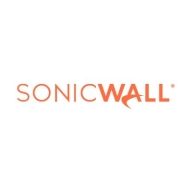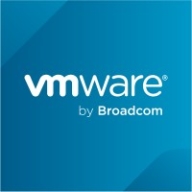

VMware Carbon Black Cloud and SonicWall Capture Client are two competing security solutions. SonicWall Capture Client generally fares better in terms of its feature set and perceived overall value despite higher costs.
Features: Users value VMware Carbon Black Cloud's comprehensive threat detection, incident response capabilities, and behavior analytics. SonicWall Capture Client excels in its seamless integration into existing SonicWall infrastructure, advanced malware protection, and real-time endpoint monitoring.
Room for Improvement: VMware Carbon Black Cloud users often report complex configurations, performance issues, and high resource consumption. SonicWall Capture Client needs improvement in occasional compatibility issues, more intuitive management tools, and faster update cycles.
Ease of Deployment and Customer Service: VMware Carbon Black Cloud receives mixed reviews on deployment, with some users finding it cumbersome. Customer service is generally satisfactory. SonicWall Capture Client is praised for a smoother deployment process and responsive customer service. Users tend to find SonicWall's deployment and support more streamlined.
Pricing and ROI: VMware Carbon Black Cloud users feel the initial setup cost is high, though the ROI is justified by advanced features. SonicWall Capture Client’s higher setup cost is offset by its robust integration and lower long-term operation costs. SonicWall's perceived worth drives a better ROI given its effective feature set despite a steeper initial investment.
Partners can purchase single endpoints at prices equivalent to 1,000-endpoint deals, providing an advantage for managed security service provider partners.
While their escalation process is understandable, it can be time-consuming as all logs need to be provided multiple times across different service levels.
There are no restrictions on the scalability of SonicWall Capture Client.
The installation process is straightforward, requiring only five pilot installations to enable customers to complete the remaining installations independently.
SonicWall Capture Client is accessed via cloud-based management console.
One of the drawbacks is that I cannot use Advanced and Premier licenses within a single tenant, which can be problematic when users need to deploy different licenses.
XDR cannot be used unless MDR services are purchased with SonicWall.
The RAM usage is higher compared to SentinelOne, utilizing approximately 150 megabytes of memory.
SonicWall Capture Client offers a cost-effective solution that's cheaper compared to other vendors like CrowdStrike.
Machine learning is particularly effective due to SonicWall sandboxing's threat intelligence database of approximately 7.1 billion entries.
One is that users can use the sandbox of SonicWall, which is called Capture ATP for free.
| Product | Market Share (%) |
|---|---|
| VMware Carbon Black Cloud | 0.2% |
| SonicWall Capture Client | 0.6% |
| Other | 99.2% |


| Company Size | Count |
|---|---|
| Small Business | 10 |
| Midsize Enterprise | 1 |
| Company Size | Count |
|---|---|
| Small Business | 5 |
| Midsize Enterprise | 4 |
| Large Enterprise | 7 |
SonicWall Capture Client is a unified client platform that delivers multiple endpoint protection capabilities, including next-generation malware protection and application vulnerability intelligence. It leverages cloud sandbox file testing, comprehensive reporting, and enforcement for endpoint protection.
Fortify Endpoint and Workload Protection
Legacy approaches fall short as cybercriminals update tactics and obscure their actions. Get advanced cybersecurity fueled by behavioral analytics to spot minor fluctuations and adapt in response.
Recognize New Threats
Analyze attackers’ behavior patterns to detect and stop never-before-seen attacks with continuous endpoint activity data monitoring. Don’t get stuck analyzing only what’s worked in the past.
Simplify Your Security Stack
Streamline the response to potential incidents with a unified endpoint agent and console. Minimize downtime responding to incidents and return critical CPU cycles back to the business.
We monitor all Endpoint Detection and Response (EDR) reviews to prevent fraudulent reviews and keep review quality high. We do not post reviews by company employees or direct competitors. We validate each review for authenticity via cross-reference with LinkedIn, and personal follow-up with the reviewer when necessary.